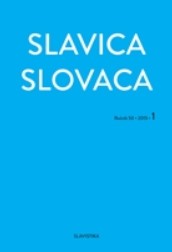Христианская притча в народной гравюре XVIII–XIX веков в общеславянском культурно-языковом контексте
Christian Parable in the 18th–19th Century Popular Engravings as part of the Common Slavic Cultural and Linguistic Context
Author(s): Alexandra PletnevaSubject(s): Cultural history, Studies of Literature, History of Religion
Published by: SAV - Slovenská akadémia vied - Slovenský komitét slavistov a Slavistický ústav Jána Stanislava SAV, v.v.i.
Keywords: folk literature; popular engravings; lubok; parables; gospel stories; “school” baroque poetics; Church Slavonic;
Summary/Abstract: The article is devoted to the analysis of folk literature monuments, namely parable texts, presented in popular engravings. Parables used to serve as both entertaining and edifying readings; they could also be used as material for church sermons. Popular engravings may involve classical prose parables and ones composed in syllabic verse, which correlate with the “school” baroque poetic tradition. Part of the parables featured on engraved sheets originate from the gospel texts. Other parables can be associated with both translated and original works of Old Russian literature. Besides, one distinguishes parable texts sourced from Western European engravings. Most of the parables, which became part of popular engravings, come from the collection of stories Velikoe Zertsalo (‘Great Mirror’) translated from Polish into Church Slavonic. Other texts of non-evangelical origin made their way to engravings through the collections Prolog (‘Prologue’) and Zlatoust (‘Chrysostom’). It is important to conclude that the Slavia Orthodoxa and the Slavia Romana traditions share common moralising storylines.
Journal: Slavica Slovaca
- Issue Year: 58/2023
- Issue No: 02
- Page Range: 369-382
- Page Count: 14
- Language: Russian

